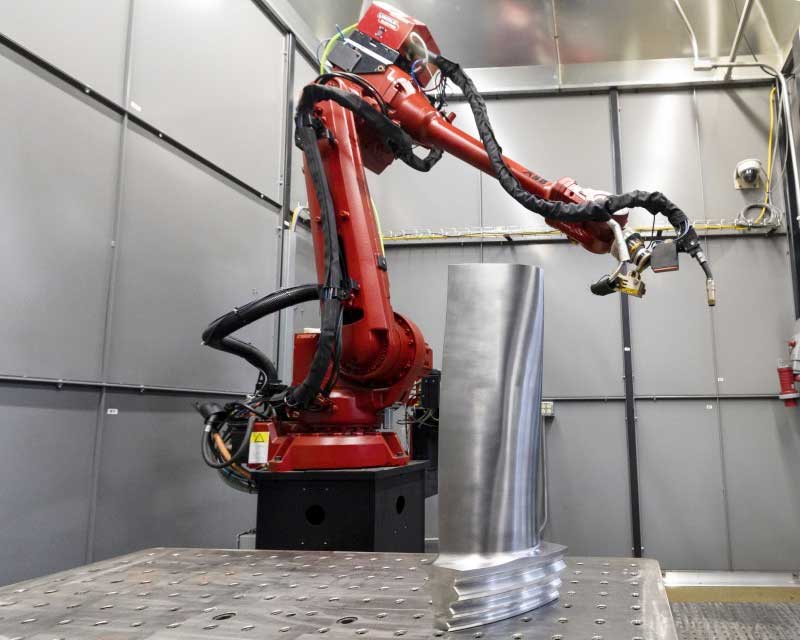Researchers at the U.S. Department of Energy’s Oak Ridge National Laboratory have 3D printed steam turbine blades for power generation in power plants.
This success demonstrates the practicality of Wire Arc Additive Manufacturing (WAAM) for the scalable production of critical components that weigh more than 25 pounds and have traditionally been produced through casting and forging processes.
“There’s now a realization that we cannot get low-volume castings and forgings that exceed 100 or 200 pounds from the domestic supply chain,” said Michael Kirka, lead research and group leader for the Deposition Science and Technology group at ORNL. “It’s put us in an untenable position, especially as we see how international conflicts have affected the international movement of critical supplies.”
The WAAM process uses an electric arc to melt metal wire, which is built up layer by layer to the desired shape. After printing, the part is machined to meet the final design requirements. The technology used to print the turbine blades was developed in collaboration with Lincoln Electric under a cooperative research and development agreement.
An important aspect of WAAM technology is its applicability for repairs to existing parts. This allows companies like Siemens Energy to more easily maintain and upgrade equipment.
“The original intent was to just print 25% of the top section of the blade,” said Anand Kulkarni, senior principal key expert for Siemens Technology. “But when we saw the potential of the wire arc setup at ORNL, we thought we could do the whole blade in one build. The capability to scan the part while it was being built gave us the right information that could be fed to our machining staff and enabled us to reduce production time.”
While the waiting time for large cast and forged parts has dropped to seven to eight months, ORNL was able to print the sheet in 12 hours. Including machining, a sheet can be completed in two weeks.
The advantage of 3D printing technology is that companies are not dependent on specific, uncontrollable manufacturing tools. Many of the large-format components in today’s turbines are several decades old. Due to closures and relocation of the industry abroad, the original tools used to manufacture them are no longer available. 3D printing offers a reliable alternative because it can replicate any design.
The project, funded by the DOE Office of Fossil Energy and Carbon Management, includes other ORNL researchers Ryan Duncan, Luke Meyer, Chris Masuo, Chris Ledford, Patxi Fernandez-Zelaia, Andrzej Nycz, and Andres Marquez Rossy.
The successful production of the steam turbine blade at the DOE’s Manufacturing Demonstration Facility underscores the potential of 3D printing to drive the transformation of the U.S. manufacturing industry and address key challenges of our time.
Subscribe to our Newsletter
3DPresso is a weekly newsletter that links to the most exciting global stories from the 3D printing and additive manufacturing industry.






















